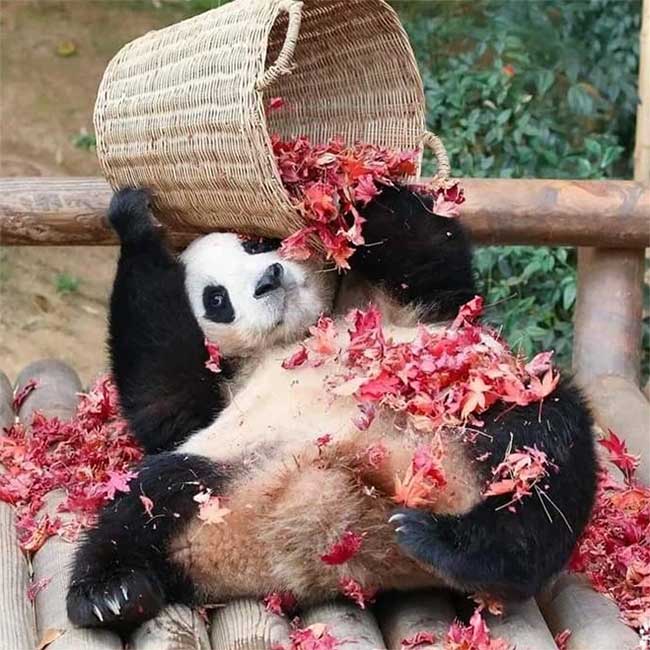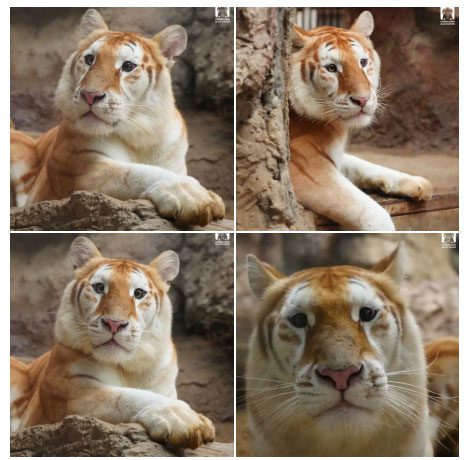The pygmy hippopotamus Moo Deng (Thailand), the penguin Pesto (Australia), and the panda Fubao (China) are among the “star” animals driving a wave of zoo tourism, generating significant revenue.
Moo Deng (meaning “fat pig” in Thai) has unexpectedly gained worldwide fame due to its petite, adorable appearance and playful antics.

Moo Deng the pygmy hippopotamus is cared for at Khao Kheow Open Zoo, Thailand. (Photo: Khao Kheow Open Zoo/X).
According to the Bangkok Post, during the national holiday on October 12-13, over 30,000 visitors flocked to Khao Kheow Zoo in Chon Buri (Thailand), home to Moo Deng, to see their “idol.”
Many expressed their willingness to wake up early, travel long distances, and endure heavy traffic just to witness the famous pygmy hippopotamus play, eat, or simply nap.
“Moo Deng mischievously grabs the water hose from its caretaker. This action attracts everyone’s attention. Audiences enjoy watching young animals, observing how they curiously explore the human world with fearless spirit“, explained Joshua Paul Dale, a cultural studies professor at Chuo University (Tokyo), regarding the Moo Deng phenomenon.

Panda Fubao has been dubbed the “top star” in the panda world due to its international fame. (Photo: @motjzaf tran).
Similarly, Panda FuBao (Fu Bao) born in 2020 in South Korea has also been labeled as a “top star” (a character receiving significant attention) in the animal kingdom, attracting millions of visitors to Everland amusement park.
Since Fu Bao was introduced to the public on April 1, 2021, approximately 5.5 million visitors have come to Panda World at Everland to meet the iconic creature. Additionally, related services and products, such as panda-themed souvenirs, have contributed to increased revenue and diversified experiences for visitors.

The goofy and adorable expressions of tiger cub Ava have made it a sensation among netizens in Thailand and beyond. (Photo: ChiangMai Night Safari).
Most recently, the tiger cub named Nong Ava at Chiang Mai Night Safari (Thailand) also “became a star overnight” on social media due to its photos showcasing sleepy, wide-eyed expressions. Instantly, many online users rushed to the zoo to meet this new animal “idol.”
According to National Geographic, humans are easily attracted to cute animals. This interest often transcends images and videos on social media, driving people to meet and interact with them in real life. Consequently, parks and zoos have become popular destinations, attracting tourists and visitors.
Professor Joshua Paul Dale stated: “We are addicted to small, cute things because we feel a sense of pleasure when looking at them.”
He analyzed that the human brain is quickly drawn to cuteness by activating the orbitofrontal cortex, a reward and enjoyment system in the brain.
This activation happens in just 1/7 of a second. Following this activation are slower evaluation processes that stimulate caring behavior, activating other areas of the brain and generating feelings of compassion.

A sleeping panda cub delights the audience with its cuteness. People tend to protect species deemed cuter than others. (Photo: Ami Vitale/National Geographic).
In a groundbreaking study published in 1943, Austrian zoologist Konrad Lorenz observed that features categorized as “infantile” often attract human affection, such as large heads relative to body size, big eyes, chubby cheeks, short limbs, and waddling movements.
Scientists note that these characteristics are not only present in humans but also in other young animals.
Meanwhile, according to Kamilla Knutsen Steinnes, a behavioral scientist at Oslomet University (Oslo, Norway), there is no scientific definition that encapsulates the entire range of emotions triggered when humans see cuteness. This may be due to the limitations imposed by language.
She wrote in a 2019 study: “In reality, there is very little research on emotional responses to cuteness, perhaps because there is no specific term that clearly describes it. Cuteness can evoke in us feelings of kama muta (a special emotional touch), triggering compassion, tenderness, empathy, and love.”
Dale and Steinnes both believe that human emotional responses to small, cute beings arise not only from interest but also activate a desire to shelter and protect.


















































